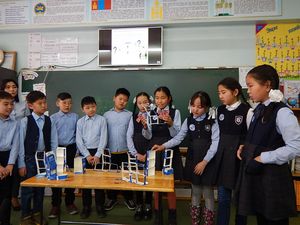26-29 November 2019 (Nagoya, Japan)
The 26th Session of the Asia-Pacific Regional Space Agency Forum (APRSAF) was held from 26 to 29 November 2019 in Nagoya, Japan. It was co-organized by the Ministry of Education, Culture, Sports, Science and Technology (MEXT) and the Japan Aerospace Exploration Agency (JAXA). APRSAF was established in 1993 to enhance space activities in the Asia-Pacific region. Attended by space agencies, governments, and international organizations such as the United Nations as well as companies, universities and research institutes, this forum is the largest space-related conference in the AsiaPacific region. APRSAF has four Working Groups: the (1) Space Applications Working Group (SAWG), (2) Space Technology Working Group (STWG), (3) Space Environment Utilization Working Group (SEUWG), and (4) Space Education Working Group (SEWG). APRSAF participants share information about their activities and future plans for their countries and regions in each working group. APRSAF also supports international projects designed to find solutions to common issues such as disaster management and environmental protection.
The Sentinel Asia initiative is one such activity and involves the use of space-based information in the form of satellite images for disaster management. ADRC has been tasked with the responsibility of receiving emergency observation requests from ADRC member countries and Joint Project Team (JPT) members. ADRC joined the Space Applications Working Group (SAWG) and reported on trends in Sentinel Asia emergency observation requests and its future action plans.
The Sentinel Asia initiative is one such activity and involves the use of space-based information in the form of satellite images for disaster management. ADRC has been tasked with the responsibility of receiving emergency observation requests from ADRC member countries and Joint Project Team (JPT) members. ADRC joined the Space Applications Working Group (SAWG) and reported on trends in Sentinel Asia emergency observation requests and its future action plans.


